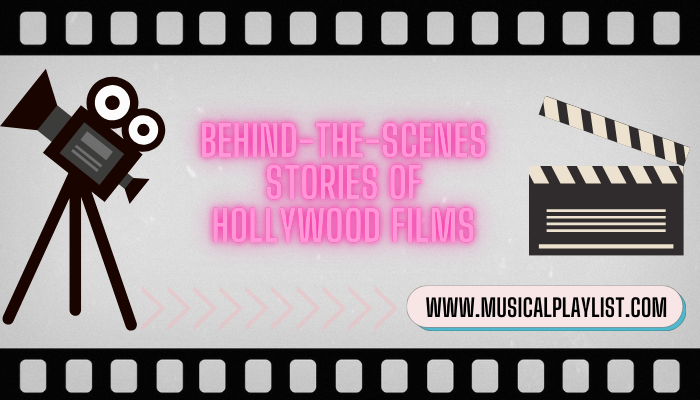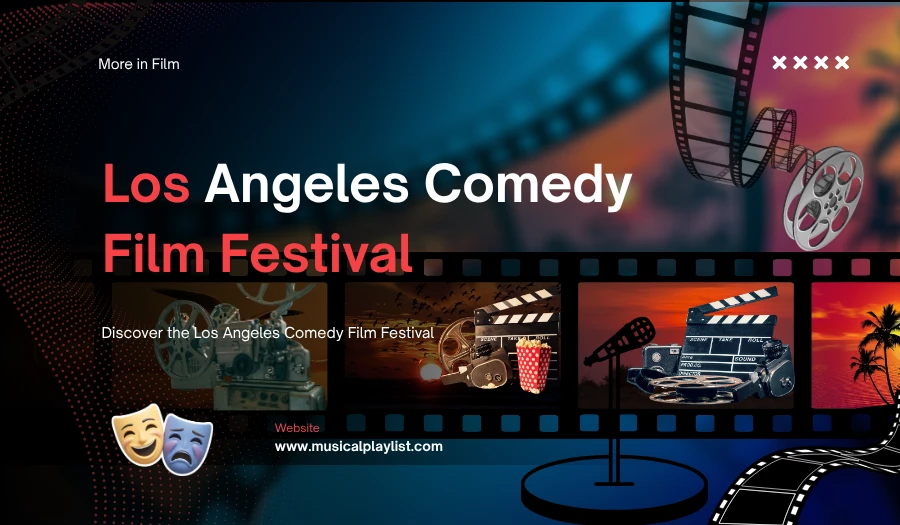Hollywood's Golden Age produced some of the most famous movies ever, yet some of these movies had very dark backstories. Hollywood's Golden Age from the 1920s to the 1960s, when the motion picture industry began to switch from silent to synchronized sound, or talkies, is told via behind-the-scenes accounts. Behind-the-scenes Stories Of Hollywood Films During this time, several of the most well-known actors in film history had their public debuts.
Hollywood's Golden Age actors were well-known across the world for their skill as actors, singers, dancers, and even fashion designers. But when the cameras stopped recording, it wasn't always as joyful as it seemed. There are a lot of horrible behind-the-scenes stories from Golden Age movies that are still horrifying today, even though it was a different age.
10 amazing behind-the-scenes stories about Hollywood films
1. Baby Burlesks

The renowned child actress Shirley Temple debuted on cinema in the short film series Baby Burlesks in 1931 at the age of three. However, considering the terrible mistreatment she endured behind the scenes, it was astounding that Temple maintained her acting career for as long as she did.
Temple spoke about her experience filming Baby Burlesks with a dozen other children in her book Child Star: An Autobiography. According to Temple, if she or any of the other children misbehaved, they would be made to sit in a windowless sound booth on the punishment box, which is a large, cubed piece of ice.
Temple realized how ludicrous the therapy was, even if she didn't think it left her physically or psychologically permanently traumatized. Even if the children were performers, the mistreatment was abhorrent because they were too young to speak.
Read also: Best Films For Film Students To Study
2. Swing Time

Ginger Rogers, famous for doing everything Fred Astaire could do except backward and in heels, had difficulties when she appeared with the famous song and dance man in Swing Time. According to Rogers' biography, Ginger My Story, she and Astaire taped a dance scene.
Despite the fact that Rogers had danced her feet raw after removing her shoes to see them covered in blood, the pressure she was under motivated her to complete the shot. In another scene, her character Penny was shown wearing shampoo, but the producers' attempts to employ a number of soaps didn't work well on camera and ended up spilling down Rogers' neck and back.
When a remedy was found, however, the actress was forced to film with egg whites in her hair. Due to the harsh, hot lighting, Rogers was exhausted from filming and had to endure the smell and discomfort of the eggs frying.
3. Breakfast at Tiffany's

The character of fashion socialite Holly Golightly in Breakfast at Tiffany's was one of Audrey Hepburn's best-known roles. During the filming of the iconic opening sequence, thousands of people gathered around the production to witness Hepburn's character window shop.
As a result of her anxiety, the actress started making blunders. The near-electrocution of a staff member behind the camera shook Hepburn enough to focus on her performance (via IMDB). The segment was more challenging to film since Hepburn didn't enjoy Danish sweets. The documentary Breakfast at Tiffany's.
The Making of a Classic claims that other parts of this scene, such as the taxi cab's arrival outside Tiffany's, were easy to film since the streets had been swept. The electrocution events could have happened on a different day, though, given this was the first day of filming.
4. Cleopatra

A number of co-star romances were alleged throughout Hollywood's Golden Age, but the one between Richard Burton and Elizabeth Taylor was particularly noteworthy. While working on the 1963 film Cleopatra, the two got to know one another. A little over a month later, they had an affair that quickly made headlines.
At the time, both artists were married. Burton was married to Welsh actress Sybil Christopher, while Taylor was married to singer Eddie Fisher. The production, which was already struggling due to staff changes and filming delays, was negatively impacted by the dispute, which garnered so much media attention (via Vanity).
After being married in 1964, Burton and Taylor briefly split up in 1974 before being married again in 1975 and ending their union in 1976. During their marriage, the couple collaborated on eleven films, including The Taming of the Shrew and Who's Afraid of Virginia Woolf? Even though their romance caused a lot of trouble, Hollywood profited from their love and passion.
Read also: Marvel She Hulk Episode 7: What You Need To Know?
5. Whatever Happened To Baby Jane?

saw Joan Crawford and Bette Davis, two of the Golden Age's most famous personalities, together in Whatever Happened To Baby Jane? When Crawford recommended Davis for Jane, the two appeared to get along. But behind the scenes, it didn't appear to be the case.
Bette and Joan, written by Shaun Considine in 1989, has been cited over time. The dispute has been covered in both Ryan Murphy's anthology series Feud and The Divine Dispute. Murphy, a lifelong fan of Davis', disclosed her hatred for Crawford in an interview with the actress prior to her death in 1989 (via EW).
A fake love triangle including Crawford's fiancé, Franchot Tone, had allegedly caused the two to argue behind the scenes for years, but it all reached a head during the Making of Whatever Happened To Baby Jane? There were several reports of issues between the two women throughout filming, but envy was the cause of a lot of these issues.
Davis even ensured that she would have more close-ups than Crawford with director Robert Aldrich, according to Charlotte Chandler's book Not the Girl Next Door: Joan Crawford: A Personal Biography.
6. Noah's Ark

Noah's Ark was one of the earliest motion movies of Hollywood's Golden Age when it debuted in 1928. However, a significant disaster that would impact the film business occurred during the middle of the production.
An incredible 7500 extras were gathered on the day of filming for the film's iconic flood sequence. According to John Baxter's Stunt: The Story Of The Great Movie Stunt Men, an astounding 600,000 gallons of water were thrown over them.
As a result, three extras were killed, one had a limb severed, and several more sustained serious injuries. These occurrences led to the implementation of more sophisticated safety regulations for future projects, ensuring that such a disaster would not happen.
7. The Birds

Behind the scenes, Alfred Hitchcock produced a significant deal of drama in The Birds, one of his best films. Rumors circulated throughout production about Hitchcock's relationship with Tippi Hedren, who portrayed Melanie Daniels in The Birds. Hedren talked about the abuse she experienced during this time in Tippi A Memoir, calling Hitchcock compulsive and detailing how he would constantly grope her and how she had rejected him.
After rejecting him, Hedren found himself in perilous filming scenarios. During the filming of The Birds' famous phone booth attack scene, she was injured when a piece of glass crashed over her face, leaving her scarred (via The Guardian).
Hedren has since stated that the event happened after the two worked together on Marnie rather than The Birds, despite her biography subsequently refuting her repeated accusation. Even though it's unclear exactly when Hitchcock's behavior changed, Hedren's treatment during The Birds was definitely a nightmare for the actress.
8. Gone With the Wind

Although there were notable changes behind the camera during the first three weeks of filming, Gone with the Wind was stuck in production hell for the first two years of its existence. The project's director, George Cukor, who had been involved since preproduction, was swiftly replaced by Victor Fleming.
This was questionable, even if there had been some arguments with other members of the production on the film's pacing and narrative. Emmanuel Levy, the author of George Cukor's book Master of Elegance: The Director and His Stars, has claimed that his dismissal had more complex causes.
In Gone with the Wind, Clark Gable played Rhett Butler, and it was believed that Cukor knew that Gable was a male escort. Cukor supposedly refused to work with Gable, so Gable used his influence to dismiss him.
Despite the differing opinions of historians, those who knew the two, and other famous individuals from the time, one thing is clear: Cukor and Gable had a contentious relationship.
Read also: Exploring The World Of Brenda Song's Movies And TV Shows
9. Singin' in the Rain

Singin' in the Rain's famous soundtrack is still highly identifiable seven decades after the film first came out, although not all of its musical numbers were shot with ease.
In the documentary about the film's 50th anniversary, Debbie Reynolds, who portrayed Kathy, remarked about how filming Good Morning left her with bleeding feet. According to her 2013 memoir Unsinkable, the filming took over fifteen hours.
Due to the long filming session and her inability to dance, the actress's skin bled and blistered terribly after dancing several times. This caused tension between her and Gene Kelly.
10. The Wizard of Oz

The Wizard of Oz is without a doubt Judy Garland's most memorable movie. Garland didn't realize she would become one of the most well-known LGBTQ+ people in history when she played Dorothy at the age of 16.
The pressures of Hollywood and her mother (via biography) forced Garland to smoke an incredible 80 cigarettes a day and eat just soup and coffee during filming.
She was also given sleeping pills at night to offset the effects of the initial dosage and pep pills, which included amphetamines, to keep her up while filming.
Conclusion
Hollywood films are charming because of their many behind-the-scenes moments, which are full of ingenuity, difficulties, and incredible stories; they are not limited to what happens on screen. From unexpected friendships struck on set to last-minute changes made to the script, these stories demonstrate the work and passion that go into every production. They remind us that while the final product may be sleek and shiny, the process of creating it is often anything but. By looking at these behind-the-scenes activities, one may have a greater understanding of the creativity, commitment, and teamwork that go into making Hollywood films so engaging.
FAQ's: Behind-the-scenes Stories Of Hollywood Films
What is behind the scenes in movies?
Behind-the-scenes (BTS), often referred to as the making-of, the set, or on the set, is a genre of documentary cinema that documents the creation of a motion picture or television show.
What is special about Hollywood movies?
The first movie studios and production businesses appeared in Hollywood, which is the oldest part of the film industry. It has established the standard for other national film industries and is the origin of many film genres, including comedy, drama, action, musicals, romances, horror, science fiction, and war epics.
What are the two types of scenes?
Scenes can be categorized according to where they are in the narrative (e.g., climax scene, starting scene). The fiction-writing style that predominates in a scene's presentation might be used to categorize it (e.g., action scene, conversation scene).
What made Hollywood famous?
By the 1930s, Hollywood studios had achieved full vertical integration, controlling production, distribution, and exhibition. This allowed Hollywood to produce 600 pictures annually. Hollywood's sparkling reputation as the "dream factory" and Tinseltown may be attributed to the film industry.




